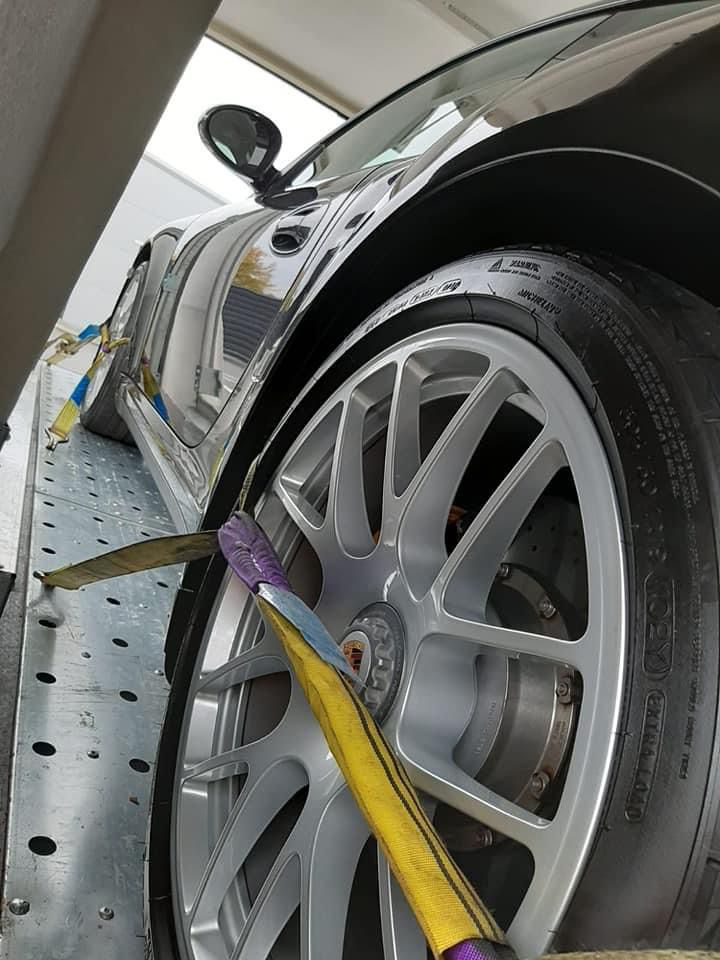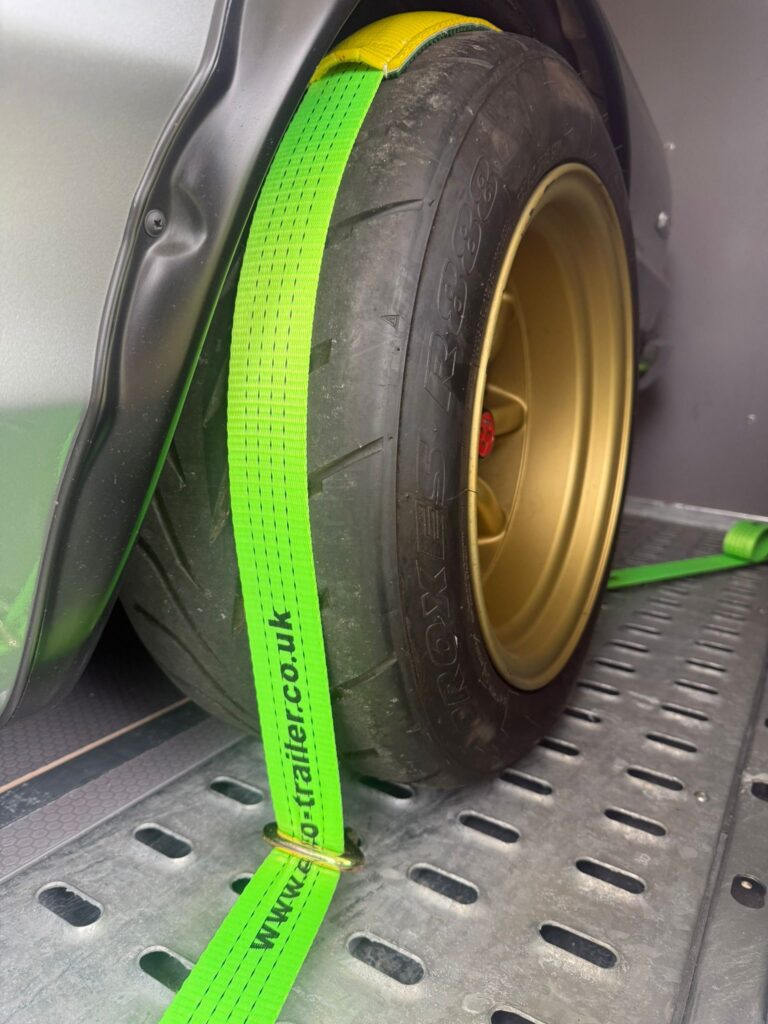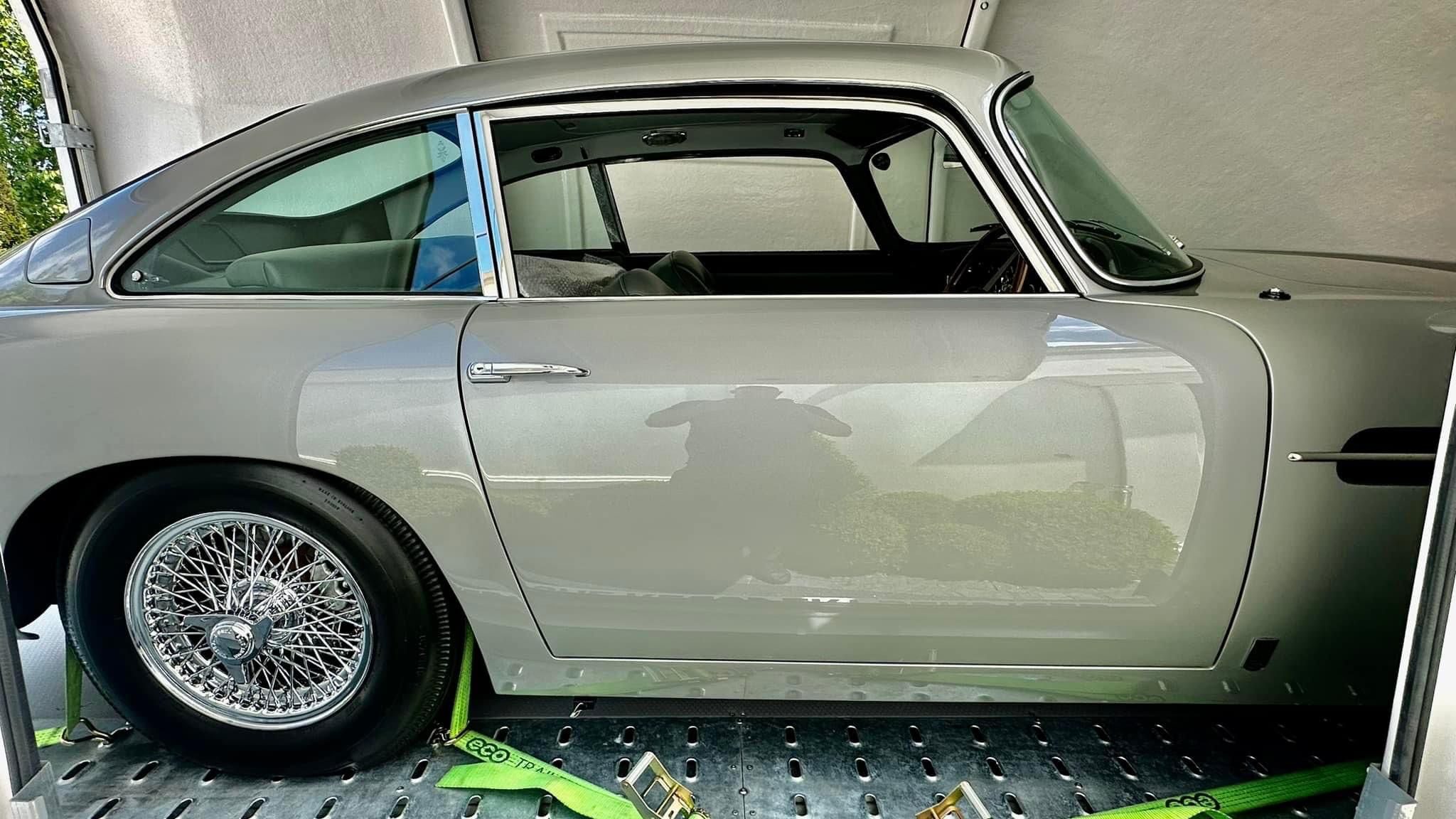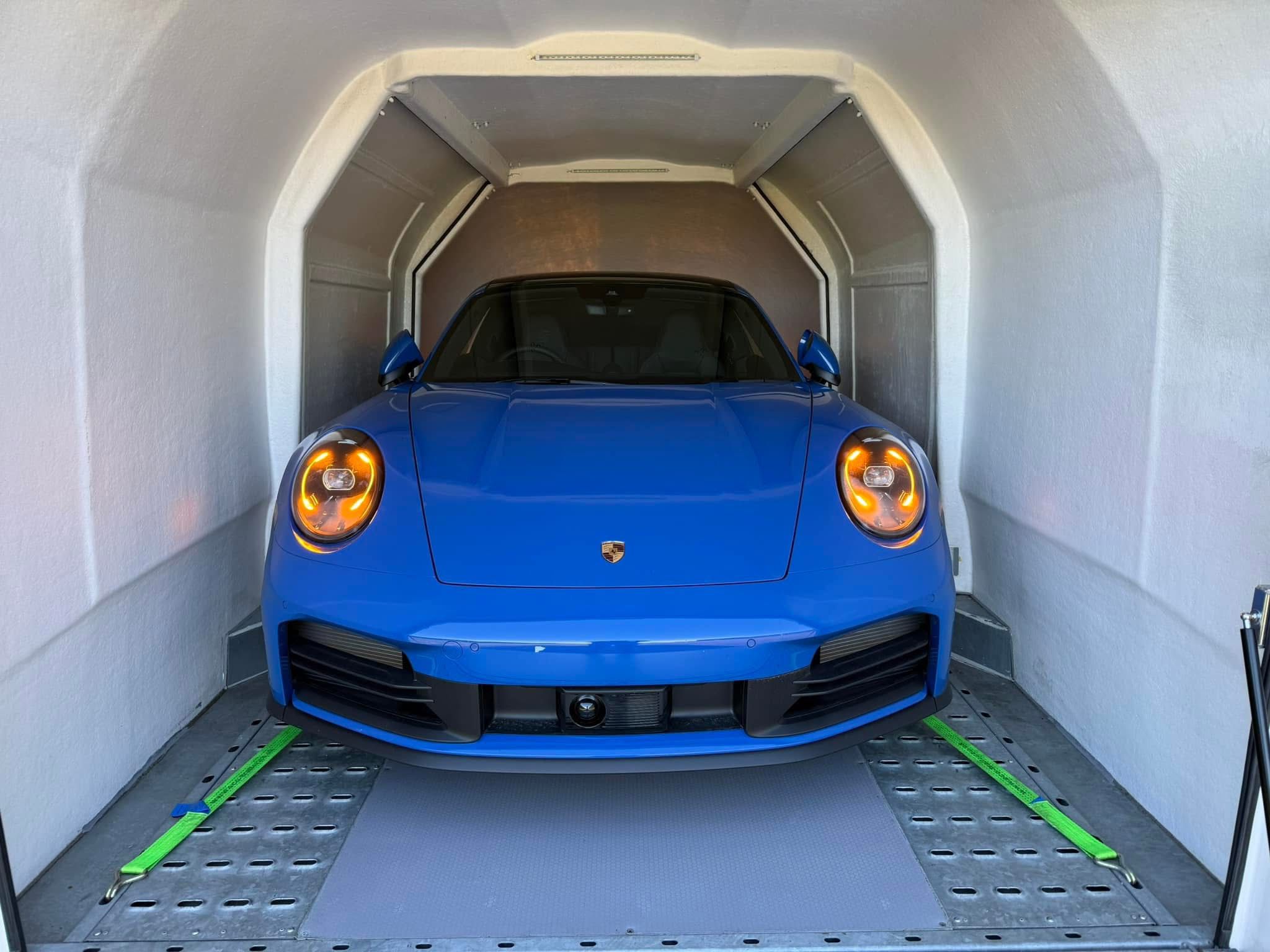When transporting a valuable vehicle (be it a cherished vintage car, race car or high-powered supercar) ensuring it’s safely secured inside your trailer is absolutely essential.
At Eco-Trailer, we design enclosed car transporters with both vehicle protection and ease of use in mind. However, even with the best trailer in the world, poor loading or strapping can lead to damage or even accidents on the road.
In this guide, we’ll walk you through the best practices for safely loading your car into your trailer and explore the pros and cons of the different strapping methods used. Whether you’re using traditional choker-style straps or a punch deck system with over-wheel ratchet straps, getting it right is key to safe and stress-free transport.
1. Loading Your Vehicle Safely
Most enclosed car trailers – like the models manufactured by Eco-Trailer Limited – are fitted with a tilting trailer bed. This gives you a much shallower loading angle, which is ideal for low-clearance vehicles.
You have two options when loading:
- Drive-in loading: Great for running vehicles with good access. Err on the side of caution; always go slow and use a spotter if visibility is limited.
- Winch loading: The safer choice for non-running vehicles, or when space is tight. Winching gives you greater control and reduces the risk of damage.
Tip: Stay clear of the winch line while in use and avoid sudden movements. Safety first!
For additional advice on winching options, head over to our article “Manual vs Electric Winches” which covers everything you need to know, along with advice on the type of cable to use.
2. Getting the Nose Weight Right
Before you even think about tying the car down, it’s crucial to get the positioning right inside the trailer. Correct placement ensures the weight is distributed evenly, which helps with stable towing and reduces strain on both your trailer and tow vehicle.
Here are a few things to bear in mind:
- Align centrally: Make sure the car is as central as possible within the trailer’s width. This prevents uneven tyre wear and ensures balanced handling while towing.
- Centre the weight: Aim to place the car’s weight slightly forward of the trailer’s axle to achieve the correct nose weight. Too much weight at the back can cause instability, while too much at the front can overload the tow hitch. Adjust your car’s position until the nose weight is between 70-120kg, as a general guide (subject to the maximum limits of your towing vehicle and tow bar).
- Mark the front wheel location: Once you’re happy with the balance, this will allow you to install a wheel chock at that spot for repeatable, perfectly balanced loading every time.
Eco-Trailer offers a range of wheel chocking solutions, including both fixed chocks and telescopic wheel chock bars, allowing you to securely position a wide variety of vehicles.
3. Strapping Down: Why It Matters
Once the vehicle is correctly positioned, the next step is securing it properly. A car that isn’t firmly strapped can shift during transit, which could damage the vehicle or make the trailer unstable.
There are two common strapping methods used in enclosed trailers: choker-style wheel straps and over-wheel straps used with a punch deck floor system. Both can be effective if used correctly, but they have different advantages depending on your setup and preferences.
Standard Wheel Strapping with Choker and Wheel Straps (Using Tie-Down Holes)

This traditional method involves looped straps that go around the wheels and are secured to tie-down points on the trailer floor. A choker strap wraps around the tyre; a short link strap runs across the face of the wheel; and a single ratchet strap per wheel secures the assembly to the trailer floor. Simple and effective!
Pros:
- Flexible fit: Suitable for almost any vehicle, especially if the trailer doesn’t have a punch deck floor.
- Reliable and proven: Widely used and trusted across motorsport and vehicle transport industries.
- Available anywhere: Cost effective and easy to replace, or source additional straps if needed.
Things to keep in mind:
- Avoid contact with bodywork: Make sure straps don’t rub against painted surfaces, especially around arches.
- Tighten evenly: Ensure all four wheels are strapped and the tension is balanced to avoid stressing the chassis.
- Use quality accessories: Tie-down rings or D-rings must be rated to handle the weight of the vehicle.
Over-Wheel Straps with Punch Deck Anchoring

This setup uses wide straps which sit over each tyre and anchor it directly to the punched trailer bed. It has a slightly higher initial set-up cost, but in our view it’s definitely worth the investment.
Pros:
- No contact with bodywork: As the strap only touches the tyre, there’s no risk of scratching paint or damaging alloy wheels.
- Fast and efficient: This system allows for quicker loading and unloading; perfect for race teams or frequent transporters.
- Does not interfere with vehicle suspension: The wheel is pulled straight down without lateral force, meaning that it doesn’t affect alignment geometry either.
Things to keep in mind:
- Tyre pressure and size can affect fit: Ensure straps are suited to the wheel size and tread width.
- Check the punch deck condition: Floor hooks and anchor points should be free from rust or debris to ensure a secure grip.
- Don’t overtighten: As with any method, avoid excessive tension which can compress the suspension too much or cause unnecessary stress to the tyres.
At Eco-Trailer, we supply a full range of high-quality vehicle strapping systems, including choker kits, over-wheel straps, ratchets, and mounting hardware—designed specifically for use with enclosed car trailers.
Explore our complete strapping a load fixings range here.
4. Final Checks Before Departure
Once the vehicle is loaded and strapped, it’s worth running through a quick checklist:
- Double-check all straps for tightness and security.
- Ensure straps haven’t moved during initial towing or braking.
- Inspect all contact points for wear or rubbing.
- Do a short test tow (if possible) and recheck strap tension after a few minutes on the road.

Advice round-up
Proper loading and strapping are essential when transporting valuable vehicles, whether it’s a pristine classic or a track-ready racer. At Eco-Trailer, we design our enclosed car trailers to support safe, simple and secure transport, and with the right techniques, you can have total confidence on the road.
By understanding the pros and cons of different strapping methods and ensuring your vehicle is properly positioned, you’ll not only protect your car but also ensure a smoother, safer journey every time.
Remember that the Eco Shuttle, Velocity IQ and Titan can all be upgraded to a punch deck flooring system as an optional extra, making them compatible with over wheel straps. Our newly released Tow-Lite Trailer also uses this system as standard.
If you’re unsure which strapping method suits your trailer best or want to upgrade your equipment, get in touch with the Eco-Trailer team today – we’re always happy to help.
No pressure, no hard sell — just helpful guidance to get the most out of your enclosed car trailer.






